Kalanchoe Pink Butterflies Profile
Written by Iris
Nov 08 2021
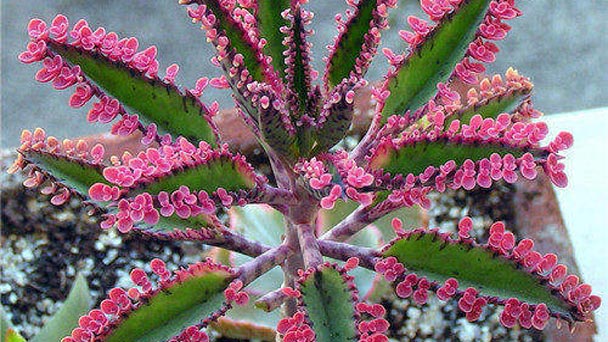
Kalanchoe Pink Butterflies is an incredibly colorful variegated form of an old hybrid that was hard to track down its heritage. The original hybrid was known as 'Houghton's Hybrid', and was a cross between Kalanchoe diagremontiana aka the Mother of Thousands and Kalanchoe delagoensis (aka Kalanchoe tubiflora). At some point a variegated sport of this hybrid appeared and Kalanchoe Pink Butterflies came to be.
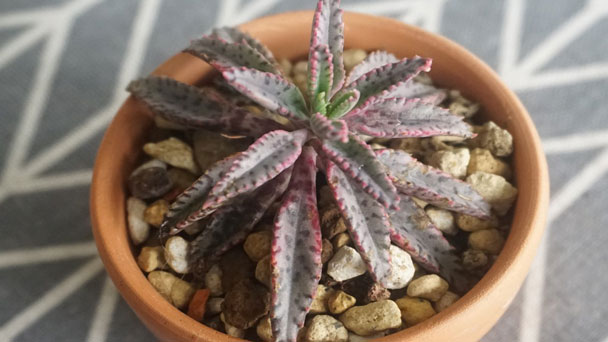
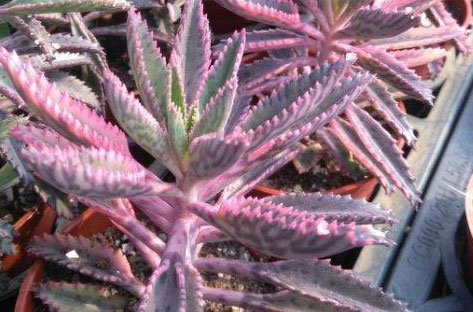
To propagate new plants, fill the pots with a cactus potting mix. Place the plant parts at the top of the moist potting soil.
Keep sprinkling water on the cuttings for the first few days to keep the soil and cuttings moist. But make sure do not overwater and also avoid exposure to direct intense sunlight.
Once the plants are established in the soil cut short the water supply and care for them like mature succulents.
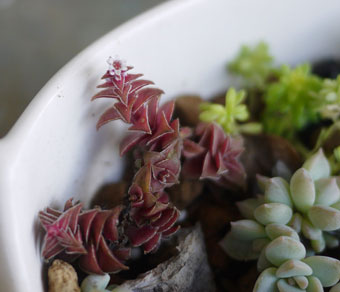
Kalanchoe Pink Butterflies grows well at all levels of humidity. For indoor succulents, the humidity at room temperature is just fine for their healthy growth.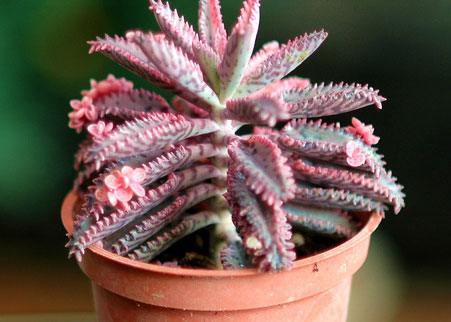
Kalanchoe Pink Butterflies is mainly grown for its attractive pink foliage. This succulent will be a great treat to Kalanchoe succulent lovers. Kalanchoe Pink Butterflies will make a great addition to succulent gardens, landscaping, and container gardens.
Kalanchoe blossfeldiana: The most popular type of kalanchoe, blossfeldiana features large flower heads and is available in a variety of colors. They naturally bloom in the spring, though they can be forced into flowering throughout the year.
Kalanchoe manginii: This plant varietal features fleshy leaves and bears large, bell-like pendant flowers. Moist air is an essential component of its prolonged flowering.
Kalanchoe porphyrocalyx: Also known as Pearl Bells, this varietal consists of slender, rectangular leaves and purple pendant flowers.
Kalanchoe beharensis: This kalanchoe type is prized for its large, velvety leaves, which come in pale silvery green.
Kalanchoe pinnata: This kalanchoe variety is characterized by fleshy green leaves and bears tiny plantlets along its margins.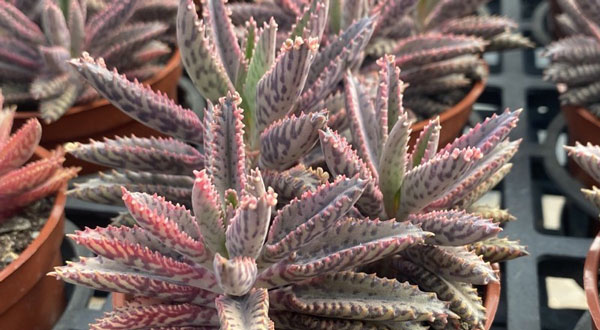
Kalanchoe Pink Butterflies PictureKalanchoe Pink Butterflies InfoEcological Habits of Kalanchoe Pink ButterfliesCharacteristics of Kalanchoe Pink ButterfliesHow to Grow and Care for Kalanchoe Pink ButterfliesHow to Grow Kalanchoe Pink ButterfliesHow to Care for Kalanchoe Pink ButterfliesUses of Kalanchoe Pink ButterfliesVarieties of KalanchoeKalanchoe Pink Butterflies Common Pests/DiseasesKalanchoe Pink Butterflies Companion Plants
Kalanchoe Pink Butterflies Picture

Kalanchoe Pink Butterflies Info
| Common Name | Kalanchoe Pink Butterflies |
| Family | Crassulaceae |
| Genus | Kalanchoe |
| Native | Africa, Madagascar and some areas of Asia |
| Plant type | Tropicals and Tender Perennials. Cactus and Succulents. Evergreen. |
| Hardiness | Tender. USDA 10a-11 |
| Invasive | No |
| Edible | No |
Ecological Habits of Kalanchoe Pink Butterflies
Kalanchoe Pink Butterflies, commonly known as 'Pink Mother of Thousands' is an amazing, variegated form of Kalanchoe × houghtonii. Kalanchoe × houghtonii is originally a cross between kalanchoe delagoensis and Kalanchoe daigremontiana. The succulent produces abundant tiny pink butterfly-like plantlets on its leaves. kalanchoe pink butterflies does not have the ability to root from the plantlets because these plantlets lack chlorophyll and eventually die. The succulent does not require a lot of care and maintenance and can be easily grown indoors and outdoors.Characteristics of Kalanchoe Pink Butterflies
Kalanchoe pink butterflies is a hybrid that comes from another hybrid, the Kalanchoe x houghtonii, which comes from a cross between Kalanchoe daigremontiana y Kalanchoe delagoensis. The most notable feature are its beautiful pink suckers. that, as it does not have chlorophyll (remember that chlorophyll is a green substance that allows plants to photosynthesize and grow), unfortunately they do not survive. This hybrid, like all Kalanchoe, has a very fast growth rate And despite the fact that it reaches a height of 40-50cm, it can be grown in a pot throughout its life.
How to Grow and Care for Kalanchoe Pink Butterflies
How to Grow Kalanchoe Pink Butterflies
- With Stem Cuttings
- With Leaf Cuttings
To propagate new plants, fill the pots with a cactus potting mix. Place the plant parts at the top of the moist potting soil.
Keep sprinkling water on the cuttings for the first few days to keep the soil and cuttings moist. But make sure do not overwater and also avoid exposure to direct intense sunlight.
Once the plants are established in the soil cut short the water supply and care for them like mature succulents.

How to Care for Kalanchoe Pink Butterflies
- Light
- Soil
- Water

- Temperature and Humidity
Kalanchoe Pink Butterflies grows well at all levels of humidity. For indoor succulents, the humidity at room temperature is just fine for their healthy growth.
- Fertilizer
- Pruning

Uses of Kalanchoe Pink Butterflies
Landscape UsesKalanchoe Pink Butterflies is mainly grown for its attractive pink foliage. This succulent will be a great treat to Kalanchoe succulent lovers. Kalanchoe Pink Butterflies will make a great addition to succulent gardens, landscaping, and container gardens.
Varieties of Kalanchoe
While there are tons of different kalanchoe varietals out there, only a few are well-suited to life as a houseplant. The most popular (and widely-available) options include:Kalanchoe blossfeldiana: The most popular type of kalanchoe, blossfeldiana features large flower heads and is available in a variety of colors. They naturally bloom in the spring, though they can be forced into flowering throughout the year.
Kalanchoe manginii: This plant varietal features fleshy leaves and bears large, bell-like pendant flowers. Moist air is an essential component of its prolonged flowering.
Kalanchoe porphyrocalyx: Also known as Pearl Bells, this varietal consists of slender, rectangular leaves and purple pendant flowers.
Kalanchoe beharensis: This kalanchoe type is prized for its large, velvety leaves, which come in pale silvery green.
Kalanchoe pinnata: This kalanchoe variety is characterized by fleshy green leaves and bears tiny plantlets along its margins.

Kalanchoe Pink Butterflies Common Pests/Diseases
Mealybugs and aphids can be occasionally seen attacking Kalanchoe Pink Butterflies. To get rid of these insect pests, rub the parts of this succulent with isopropyl alcohol, or use a neem oil spray. Avoid overwatering because they hate standing in water. Excess of water can cause root rot and encourages fungal growth on the roots.Kalanchoe Pink Butterflies Companion Plants
Kalanchoe Pink Butterflies also do not play well with other plants in that they have a very demanding root system. Kalanchoe Pink Butterflies need plenty of root space from other plants and particularly do not compete well with grass.Latest Updated
- Benefits of Bugleweed - 7 Science-backed Health Benefits
- Bugleweed Dangers & Side Effects - Is It Poisonous?
- How to Plant Evergreen Trees - What You Should Know
- When to Plant Evergreens - Grow Guide for Evergreen Trees
- 12 Wonderful Evergreen Shrubs for Your Garden
- 12 Popular Evergreen Plants with Pictures for Beginners
- When And How To Prune A Lilac Bush Like a Pro
- How to Grow & Care for Lilac Vine (Hardenbergia Violacea)
- Japanese Lilac Tree (Syringa Reticulata) Care & Propagation Guide
- Shumard Oak Pros and Cons - What to Know
Popular Articles
- Winter maintenance of Antirrhinum Majus
- How to Grow Terminalia Mantaly Tree
- How to Grow and Care for Crossostephium Chinense
- How to grow Antirrhinum Majus in spring
- Peristeria Elata (Dove Orchid) Profile: Info & Care Guide
- Underwatered Snake Plant (Sansevieria Trifasciata) - Signs And How To Fix
- How to Care for Brazilian Jasmine Plant (Mandevilla Sanderi)
- How to Grow & Care for Graptopetalum Purple Delight in Summer
- Rosa Chinensis (China Rose): Plant Growing & Care Tips
- How to Care for Baby Sun Rose (Aptenia Cordifolia)